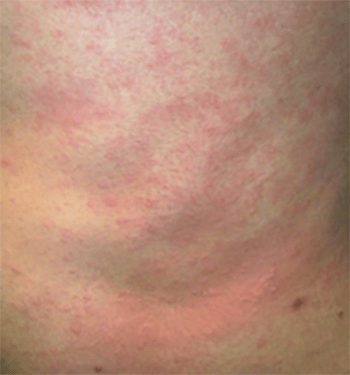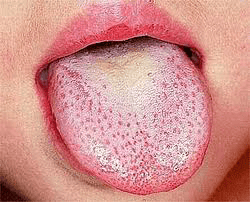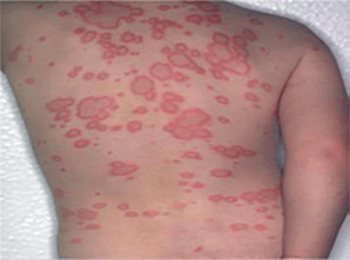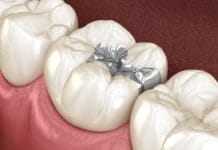With the extensive list of conditions on a dental health history, it can be quite overwhelming to really know about all of them and how they affect the dental appointment. While scarlet and rheumatic fever is not too common anymore, there’s still a reason it’s listed on health histories.
I have even seen it marked on the health history of patients, yet I was not sure why and how it affected dental care. Scarlet and rheumatic fever originate from the same group A Streptococcus bacteria found in strep throat. However, from there, the path changes a bit.
Rheumatic fever causes a complex systemic disease affecting the joints, skin, heart, blood vessels, and brain. It is an autoimmune reaction that occurs after a strep infection with group A Streptococcus pyogenes bacteria. Scarlet fever is a bacterial reaction from the group A Streptococcus bacteria.
Strep infections are a precursor to rheumatic fever and scarlet fever, and, if left untreated or undertreated, it may cause mild to severe complications. While scarlet fever can have some setbacks, rheumatic fever can turn into long-term conditions such as rheumatic heart disease.1
Strep Throat
Strep throat is from the group A Streptococcal pyogenes pharyngitis and affects the throat and tonsils. It commonly occurs in children five to 15 years of age, but it can affect anyone at any age. It is contagious and spread through coughing, sneezing, nasal secretions, and saliva.
Symptoms of strep throat are a sudden and severe sore throat, red throat with white patches (see Figure 1), pain or difficulty swallowing, swollen lymph nodes, and/or a fever of 101 degrees or higher.2
To determine strep throat, there are two tests − rapid strep test and throat culture. The rapid strep test looks for strep A antigens to determine if there’s an immune response. A throat culture provides a more accurate diagnosis to determine if strep A bacteria is present. Strep A can cause other infections such as toxic shock syndrome, pneumonia, bacteremia, and flesh-eating bacteria.3

Scarlet fever
Scarlet fever, also known as scarlatina, is a bacterial infection caused by Streptococcus pyogenes also known as group A-beta hemolytic or Strep A for short. Streptococcus group A found in the throat and skin is the same bacteria in strep throat. When this group of bacteria releases toxins, scarlet fever is present.4
It is spread through airborne droplets from coughing or sneezing and sharing or touching things an infected person has used. It’s usually in children between five to 15 years old with 80% being under the age of 10. However, any age group may contract it. One in 10 children who have Strep A pharyngitis will develop scarlet fever.5
Accompanied with the fever is a rash that generally starts on the neck and face and spreads to the legs, arms, and trunk.6 The rash is red, raised, blotchy, itchy, and looks like a sunburn (hence the name scarlet) and feels like sandpaper (see Figure 2).

Symptoms of scarlet fever appear within one to four days after the initial infection. Mild cases will resolve within a week without treatment. However, it’s wise to have treatment to accelerate recovery and reduce further complications. Although the scarlet fever rash is not contagious, the fever is.6
Scarlet Fever Symptons Are:
- High fever 101 degrees or higher
- Sudden sore throat, often with white or yellow patches with difficulty in swallowing
- Headaches
- Chills
- Nausea, loss of appetite and abdominal pain
- Fatigue
- Red rash appears within 12 to 48 hours of onset and usually starts to fade after six days
- Strawberry tongue is bumpy and red at the beginning of the disease then may appear as a white coating. The bacteria release a substance that causes the red tongue to have the same color as the red rash on the skin5,6 (See Figure 3) The red tongue appearance happens when the strep A bacteria releases erythrogenic toxins. It’s the same toxins that make the red rash that covers the body.

Diagnosis is accomplished through a throat culture and blood tests. Treatment involves:
- Antibiotics for the full 10-day course
- Calamine lotion for rash and to reduce itchiness
- Drinking plenty of fluids and eating soft foods
- Reducing the fever
The complications during the early stages are ear infections, pneumonia, throat abscess, and sinusitis. During the later stages, the complications are rheumatic fever, liver and kidney damage, bone infection, flesh-eating bacteria, and toxic shock syndrome.
Rheumatic Fever
Rheumatic fever is an inflammatory disease caused by a delayed response to group A Streptococcus infection, which may affect different parts of the body. It usually follows strep throat or scarlet fever that is undertreated or untreated − recurrent strep throat infections, untreated or undertreated strep infections, and a family history of rheumatic fever.
Strep throat is contagious, but rheumatic fever is not. Symptoms starting about one to five weeks after the infection of strep. Rheumatic fever occurs in 5% of the cases when the strep infection is left untreated.
It occurs in 20% of first-time attacks in adults and occurs in about 325,000 children. It is no longer widespread in the United States due to the growth of antibiotics and care in the early stages. However, it is still common in India, Middle East, Latin America, and parts of Africa.1
The heart is involved in about half the cases. Rheumatic fever can cause inflammation of the membranes lining, such as endocarditis, myocarditis, or pericarditis. It may contribute to a heart murmur, enlargement of the heart, and congestive heart failure. It may develop pericardial friction rubs or leakage of blood vessels into heart tissue, which can lead to rheumatic carditis. Inflammation and scarring of the heart valves may occur and causing heart function abnormalities.7
The nervous system is affected by causing abrupt nonrepetitive limb movements and grimaces, called Sydenham chorea, which occurs in 20% to 30% of rheumatic fever cases. This temporary condition arises within a few months after the initial streptococcal infection and disappears after a few weeks or months.1
In rare situations and if the epithelial barrier is penetrated, this Strep A bacteria gets into the bloodstream and deeper tissues for a condition called bacteremia. Bacteria in the bloodstream can cause a host of complications.
When it affects the connective tissue or the autoimmune response, painless subcutaneous nodules may grow over the bones and near the joints at the elbows, knees, ankles, knuckles, back of the scalp, and the vertebrae.8 These firm, round, and mobile nodules are rare in about 2% of cases and usually found with severe carditis. These nodules rarely last long—usually less than a month. However, if there’s associated arthritis from it, that may last for some time.8
Rheumatic fever Symptoms Are:
- Inflammation in joints
- Nodules under the skin often over bony areas
- Unusual jerky movements in face and hands
- Red lattice-like rash with odd margins called erythema marginatum on the trunk, upper arms, and legs, and (rarely) on the face, soles, and palms (see Figure 4)
- Fever
- Lack of energy
- Weight loss
- Stomach pains

The diagnosis focuses on changes in ECG pattern and abnormal sedimentation rate or C-reactive protein blood tests.
For treatment, anti-inflammatory medicines decrease swelling and inflammation in the joints and heart, and antibiotics kill the bacteria associated with strep throat,
Rheumatic fever increases the risks of reoccurrence, especially within the first three years. So ongoing treatment may be needed to prevent the disease from returning. As time passes, the risk lowers for a recurrence.7 People who have had rheumatic fever are often prescribed daily or monthly antibiotic treatments for life to prevent recurring infections and to lower the risk of further heart damage.
To reduce inflammation, aspirin or nonsteroidal medicines may be recommended. 9
Rheumatic Heart Disease
A complication of rheumatic fever is rheumatic heart disease. Rheumatic heart disease is a condition when the heart valves have been permanently damaged by rheumatic fever. The heart valve damage may start soon after untreated or undertreated Streptococcal infection such as strep throat or scarlet fever. An immune system response causes an inflammatory condition in the body, which can result in continuous valve damage.9
Rheumatic fever can occur at any age, although it usually occurs in children between five and 15 years old. Children who repeatedly get strep throat are the most risk for rheumatic fever and rheumatic heart disease. About 33.4 million people worldwide, mostly in underdeveloped countries, have rheumatic heart disease. 9
The Symptoms Rheumatic heart disease Depend On:
- The degree of valve damage
- Recent history of strep infection or rheumatic fever
- Shortness of breath with or without activity
- Chest pain
- Swelling
The diagnosis of recent strep infection is determined by a throat culture or blood test to evaluate for infection and inflammation. The patient may experience a heart murmur that is caused by blood leaking around the damaged valve. A heart rub is caused when the inflamed heart tissues move or rub against each other.
An echocardiogram checks the heart chambers and valves, and an electrocardiogram tests the strength and timing of the electrical activity and will show abnormal rhythms (and sometimes detect heart muscle damage). A chest x-ray checks the lungs and for heart enlargement. A cardiac A MRI takes detailed pictures of the heart for a precise view of the valves and muscles.
Treatment depends on how much damage has occurred to the heart valves, and it may include surgery to replace or repair severely damaged valves. The best treatment is to prevent rheumatic fever from happening by quickly responding to strep throat through anti-inflammatories and antibiotics. 9
The complications from rheumatic heart disease are:
- Heart failure from a severely leaking or narrowed heart valve
- Bacterial endocarditis − an infection of the inner lining of the heart from the rheumatic fever damaging the heart valves
- Complications of pregnancy and delivery due to heart damage
- Ruptured heart valve, a medical emergency that must be treated with surgery to replace the heart valve 9
Considering strep throat is still a common occurrence and knowing it may lead to a severe condition of rheumatic heart disease and permanent damage to the heart, we should educate patients on the importance of treatment for strep. The American Heart Association recommends long-term antibiotics before dental procedures if bacterial endocarditis, a heart transplant, artificial heart valves, or congenital heart defects are present. These issues may arise from rheumatic heart disease.
Since scarlet and rheumatic fever are not as prominent in the United States as it once was, these active conditions most likely won’t be seen often, if ever, in the dental clinic. While it was considered an outbreak in earlier times, it isn’t a common scare anymore. However, if either of these conditions is marked ‘yes’ on the health history, it’s worthy to know the reason and knowledge behind it.
Now Listen to the Today’s RDH Dental Hygiene Podcast Below:
References
- Rheumatic Fever. NORD National Organization for Rare Diseases. Retrieved from https://rarediseases.info.nih.gov/diseases/5699/rheumatic-fever.
- Strep A test. NIH. U.S. National Library of Medicine. Medline Plus. Retrieved from https://medlineplus.gov/lab-tests/strep-a-test/.
- Strep Point. MedicalPoint. Retrieved from https://medicalpoint.org/strep-throat/.
- Medical News Today. What You Need to Know about Scarlet Fever. Retrieved from https://www.medicalnewstoday.com/articles/176242#overview.
- Scarlet Fever. NHS Inform. Retrieved from https://www.nhsinform.scot/illnesses-and-conditions/infections-and-poisoning/scarlet-fever.
- Editorial Team. Scarlet Fever Rash —Symptoms, Causes, Treatment, Contagious, Pictures, Health Your Online Health Guide. Retrieved from https://healthh.com/scarlet-fever-rash/.
- Rheumatic Fever. University of Rochester Medical Center. Health Encyclopedia Retrieved from https://www.urmc.rochester.edu/encyclopedia/content.aspx?contenttypeid=90&contentid=P01728.
- Hartley, M. Rheumatic Fever. DermNet NZ. Retrieved from https://dermnetnz.org/topics/rheumatic-fever/.
- Rheumatic Heart Disease. John Hopkins Medicine. Health. Retrieved from https://www.hopkinsmedicine.org/health/conditions-and-diseases/rheumatic-heart-disease.











